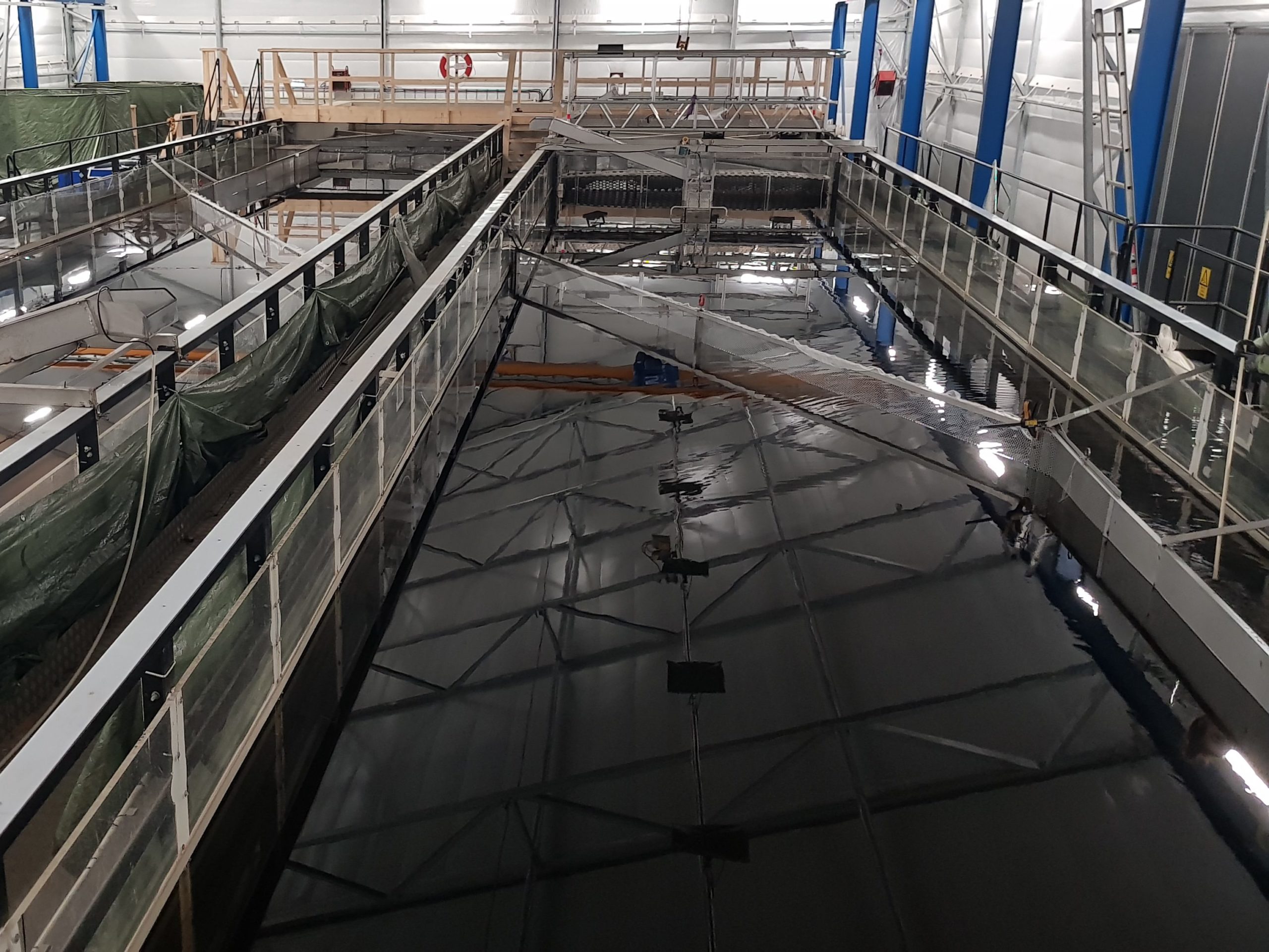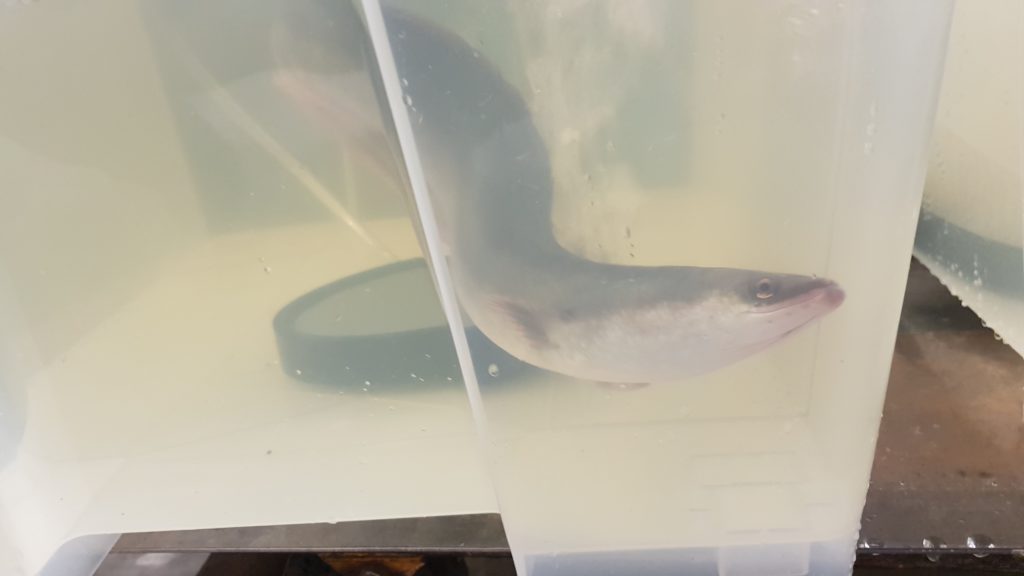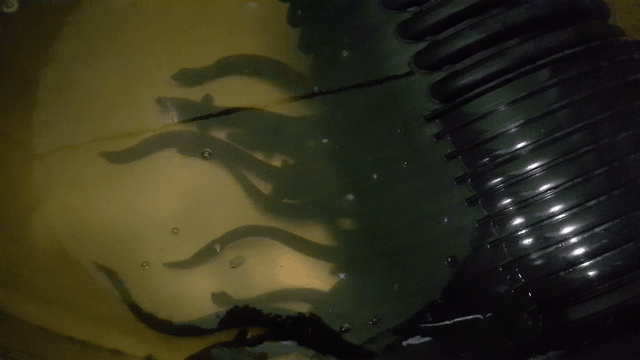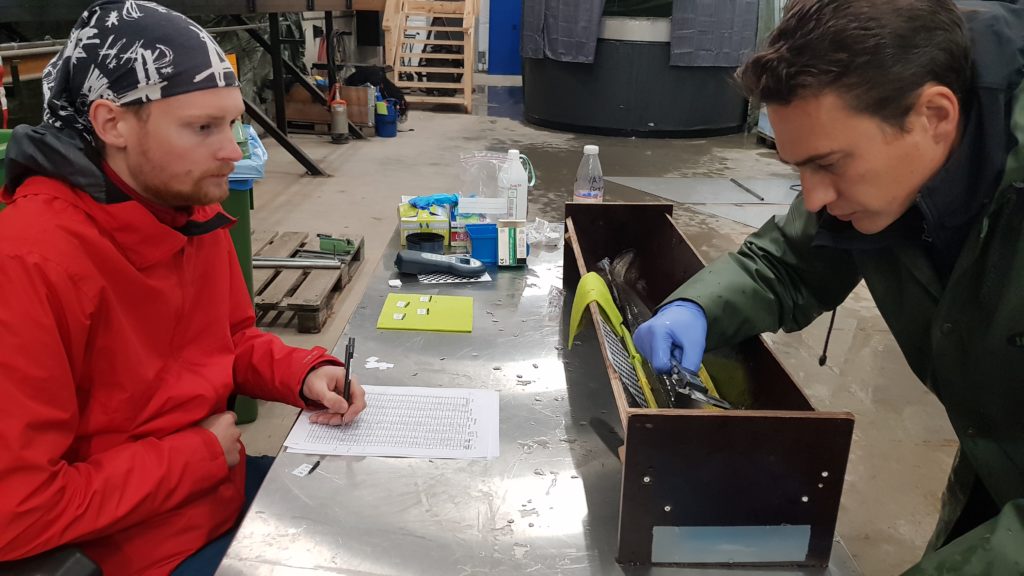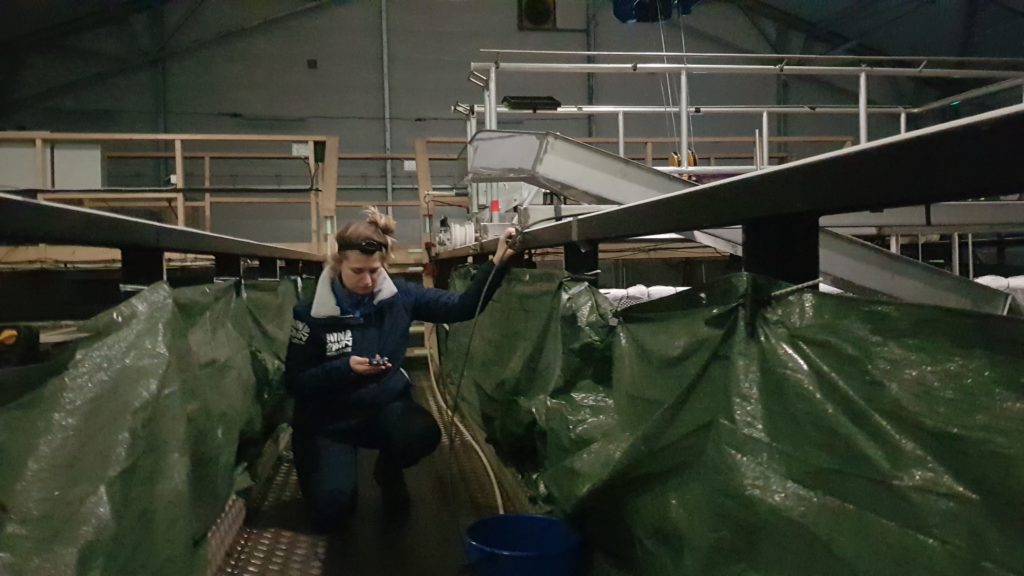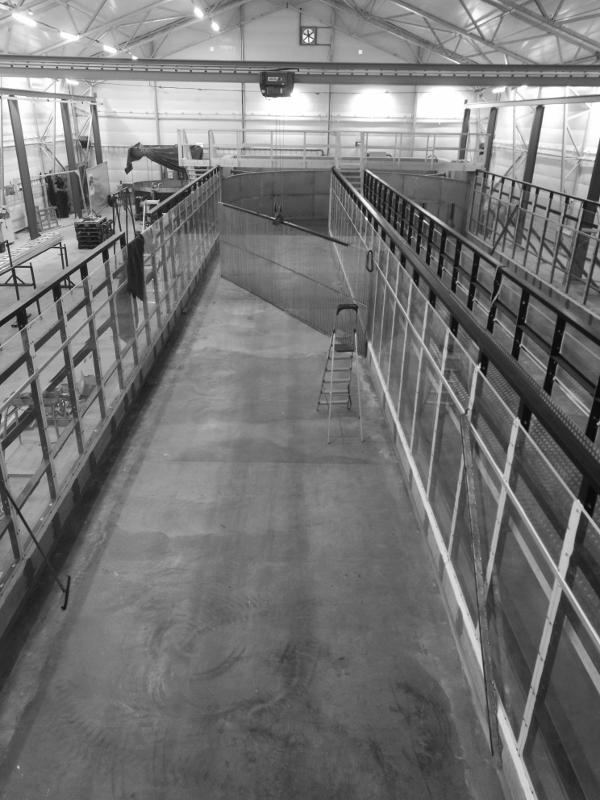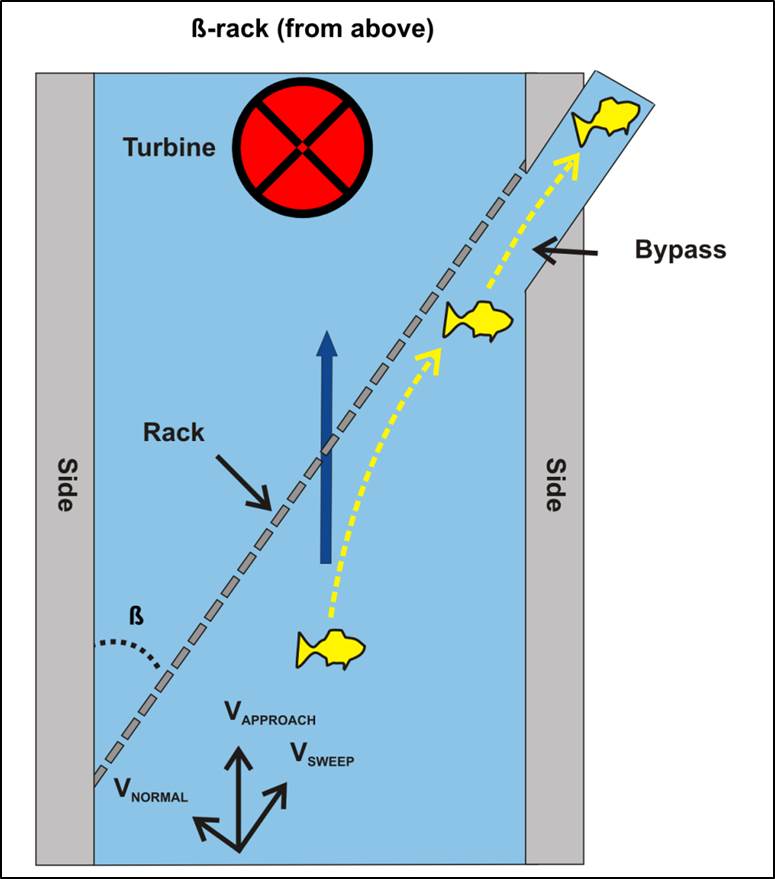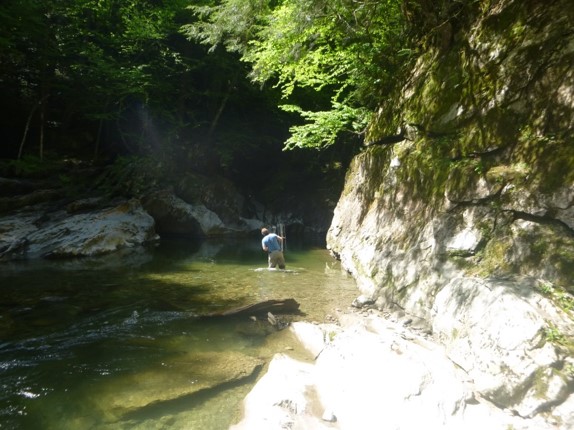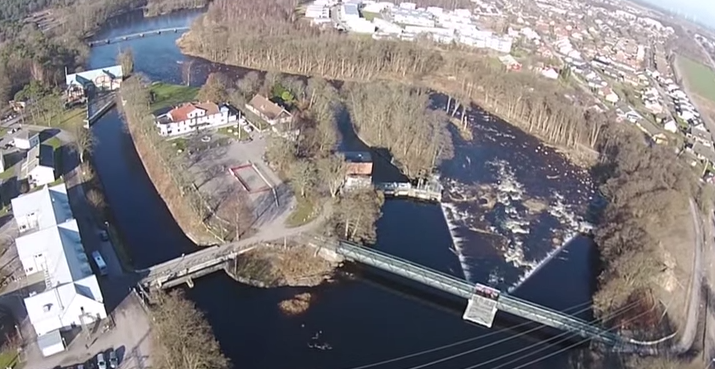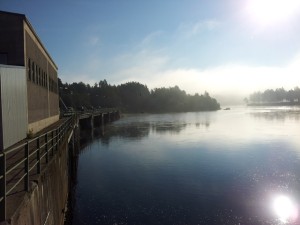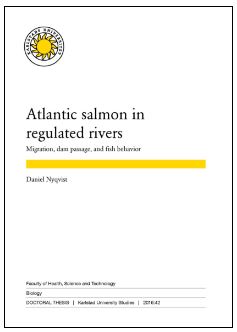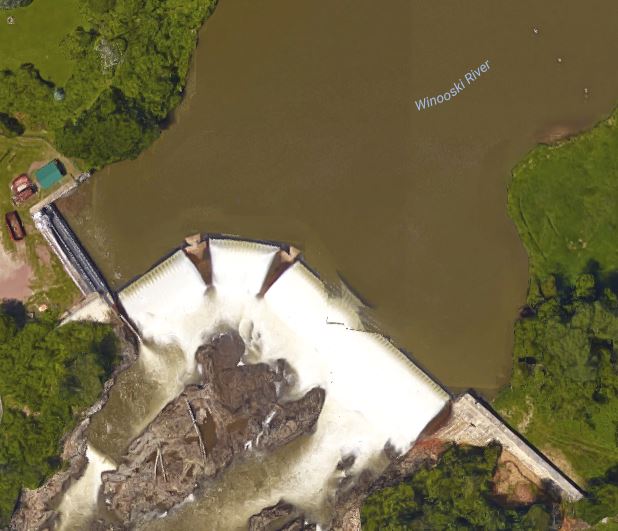17
JAN 2019 
Posted by Karl Filipsson |
låglutande galler
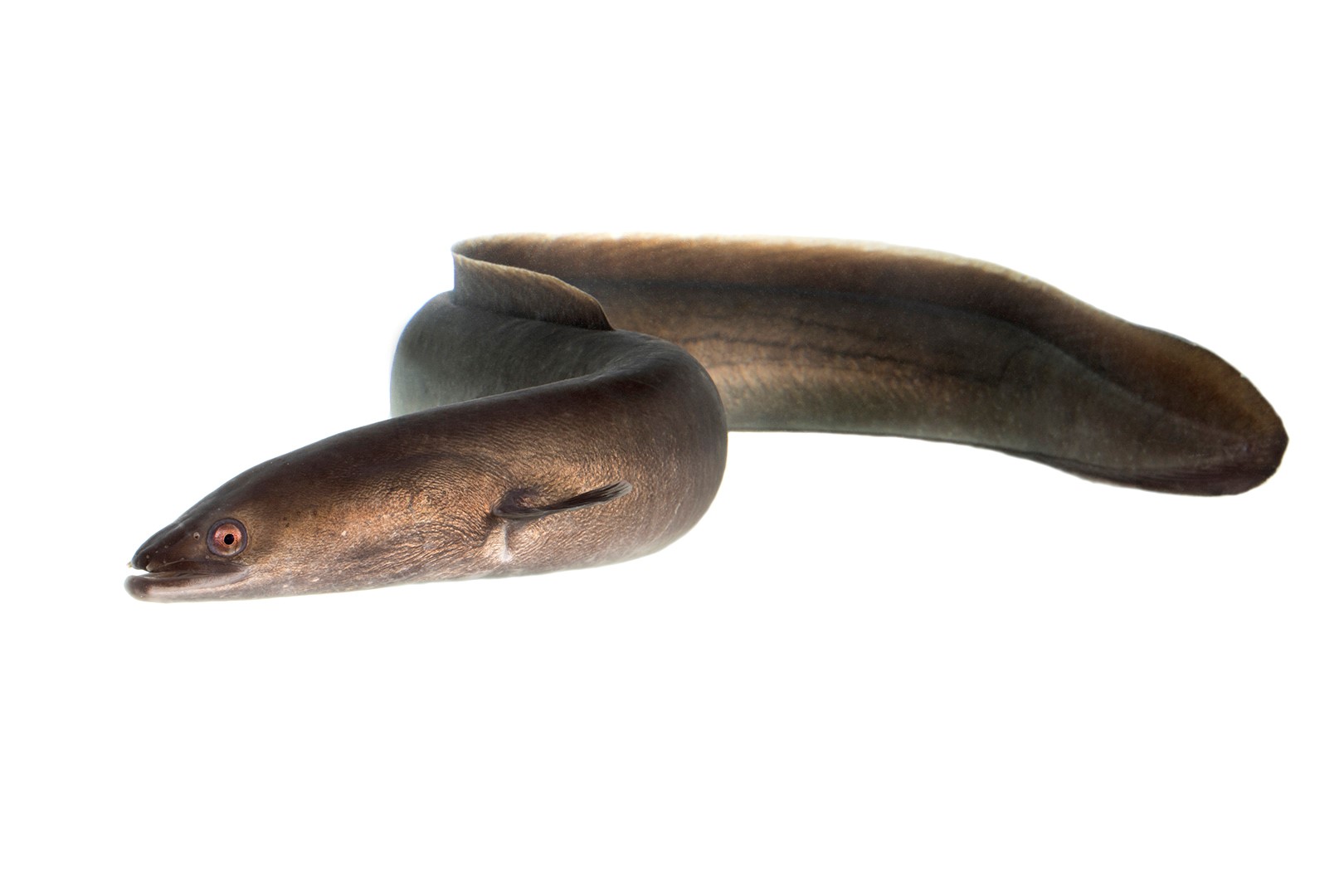
Europeisk ål, Anguilla anguilla. Foto: Jörgen Wiklund.
Under senhösten 2018 har forskare från NRRV undersökt två olika typer av låglutande galler (vinkel mot strömriktningen = 30°) och dess effekt på nedströmsvandrande ål (Anguilla anguilla). Studien har utförts i Vattenfalls nya strömränna ”Laxelleratorn” som genom sina mått (24 meter lång, 4 meter bred och 2 meter djup) är i paritet med en intagskanal till ett litet vattenkraftverk.
Bakgrunden tll studien är den stora minskningen av ålbeståndet som har skett sedan mitten av 1900-talet och som lett till att ålen numer är klassad som en akut hotad art (sedan 2005). En av orsakerna tros vara den höga mortaliteten för blankål vid nedströmspassage i anslutning till vattenkraftverk, där framförallt passage genom turbinerna ger låga överlevnadschanser.
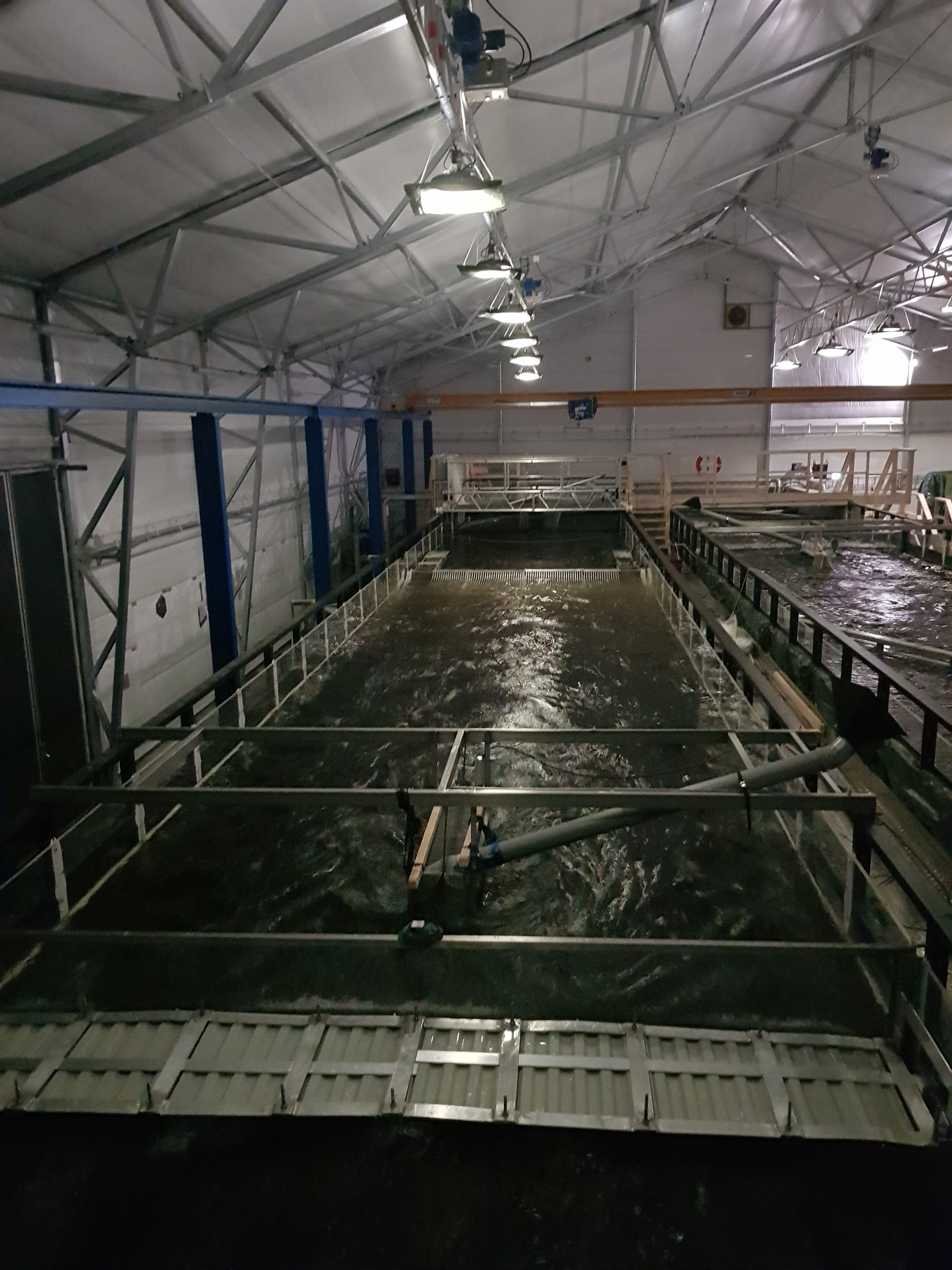
Laxelleratorn i Älvkarleby.
För att hindra ålen att passera genom turbinerna eller andra passager med hög mortalitet kan, istället för ett konventionellt intagsgaller, ett låglutande galler (< 30° mot strömriktning) installeras. Dessa leder fisken mot en flyktöppning som leder till en säkrare passage, till exempel en fiskväg eller en fälla, och en återställning av vattendragets konnektivitet. Ett exempel där ett låglutande galler finns installerat är Hertingforsen i Ätran där goda resultat uppnåtts för flera arter (Calles m.fl.).
Totalt märktes 80 ålar (medellängd ± 1 standardavvikelse (SD) = 845 ± 74 mm) med PIT-tags och släpptes ut i strömrännan där de endera fick möta ett α-galler (avleder fisk från botten mot ytan) eller ett β-galler (avleder fisken från ena sidan till den andra). Dessutom testades för vardera galler två olika spaltvidder: 15 och 30 millimeter. De huvudsakliga parametrarna som undersöktes var avledningseffektivitet för respektive gallerkonfiguration och tiden den tog för ålen att passera.
Resultatet analyseras i nuläget men de preliminära resultaten tyder generellt på en god avledande förmåga. Rapporten planeras vara klar under våren 2019.
Se även:
Calles O, Christiansson J, Kläppe S, Alenäs I, Karlsson S, Nyqvist D, Hebrand M. (2015). Slutrapport Hertingprojektet – Förstudie och uppföljning av åtgärder för förbättrad fiskpassage 2007-2015. Naturresurs rinnande vatten, Karlstads universitet


Försöksuppställningen i laxelleratorn.
